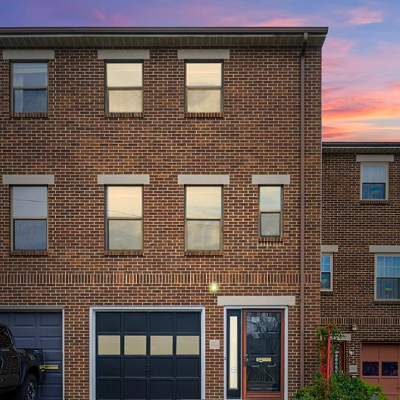This is one of the more pleasant mysteries one encounters in the alleyways of Downtown Pittsburgh; most of the others are of the "What is that smell?" or "Can I get away with parking here on a Sunday?" variety. But the answer is every bit as elusive.
Measuring only 3 feet by 2-and-a-half feet, these stone reliefs call little attention to themselves -- especially if you are looking down at your feet, trying to avoid stepping in something. But as you say, one bears a striking resemblance to Abraham Lincoln; another appears (to me at least) to be a portrait of George Washington. But the other two images -- one of a woman, the other of an Indian in a feathered headdress -- are more inscrutable.
Vernon Gay and Marilyn Evert's indispensable Discovering Pittsburgh Sculpture suggests numerous possibilities for these figures: Could the woman be Jane Grey Swisshelm, a writer and proto-feminist? Mary Croghan Schenley, who once owned much of Oakland and whose name graces one of our largest parks? Could the Native American be "an Indian-head-penny Indian"? Or is the figure actually female, whose "softly-waved hair [is] typical of a pre-Civil War rendering of Liberty"? But in the end, the book concludes, "No one is sure of the identity of the figures" -- or the identity of the person who sculpted them.
Gay and Evert date the sculptures back to 1865. And while these portraits are faces without names, they were left here by a once-famous name whose face has been forgotten. The reliefs decorate what used to be the Arbuckle Coffee Building, which was at the heart of the Arbuckle coffee empire, once the world's largest.
Born in Scotland, raised in what was then Allegheny City (Pittsburgh's North Side), John Arbuckle revolutionized not just coffee, but food packaging and even the American frontier. Even after the Civil War, there was no handy means of shipping coffee over distances: To be used for brewing, coffee beans have to be roasted, and once roasted, they don't keep for long. As a result, cowboys and pioneers could rarely get coffee, and so they were often grumpy and irritable when they went out to slaughter buffalo or native peoples in the morning. According to Pittsburgh Press articles by George Swetnam and information on file at the Carnegie Library, Arbuckle's innovation was to roast the beans and then coat them in an egg-based glaze, which protected the beans from the air. Marketed under the brand name "Ariosa," Arbuckle's coffee traveled well -- and widely.
Arbuckle had a good thing going, until he got mixed up in the sugar trade. Emboldened by his success in coffee distribution -- or maybe just hopped up on too much caffeine -- Arbuckle decided to start trading in sugar as well. This ran afoul of the sugar cartel, which was a lot more powerful than you might think. The sugar interests bought a coffee business of their own in reprisal, and for the next 20 years Arbuckle waged what were called the "sugar wars." Price-slashing was rampant, and presumably everything got all sticky when it rained. By the time the sugar cartel gave up the fight in 1911, Arbuckle's business was crippled.
You can still buy coffee with the Arbuckle brand today, but the legacy of the man himself dissolved like so much cotton candy. The portraits, created by an anonymous artist and commemorating anonymous people, are about all that remains. The Downtown commuters who hustle by the portraits without noticing them, blowing on their Starbucks lattes, don't even recognize the debt they owe him.










